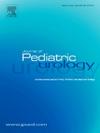尿道下裂阴茎弯曲的客观评价:一个叙述性的回顾。
IF 1.9
3区 医学
Q2 PEDIATRICS
引用次数: 0
摘要
背景:尿道下裂相关腹侧弯曲(VC)对手术决策和修复结果具有重要影响。尽管VC具有临床意义,但评估通常是通过独立视觉检查(UVI)进行的,这很容易出错。因此,人们提出了替代的客观测量技术,包括角度测量、智能手机应用和基于人工智能(AI)的工具。目的:本综述旨在评估尿道下裂手术中可用的各种VC测量技术,重点关注其准确性、可靠性和临床应用。方法:使用PubMed、MEDLINE和Cochrane数据库进行全面的文献检索,涵盖1994 - 2024年的出版物。纳入的研究评估了VC测量技术,包括紫外线、标准测角法、基于智能手机的测角法和基于人工智能的工具。使用Robvis工具确定偏倚风险。结果:纳入的501项研究中,13项符合纳入标准。研究结果显示,UVI与明显的不准确性相关,导致VC严重程度的错误分类和手术计划的潜在错误。标准的角度测量虽然是客观的,但由于视差误差和解剖学的限制,对儿科患者来说是麻烦的。基于智能手机的角度测量技术提高了准确性和观察者之间的可靠性。基于人工智能的方法通过减少主观性和增强标准化,显示出最高的精度。结论:客观测量技术,特别是基于智能手机和人工智能驱动的方法,在评估尿道下裂阴茎弯曲方面优于UVI。人工智能技术和数字成像的未来发展可能会进一步完善VC评估,从而改善手术结果。在临床实践中应鼓励采用标准化、客观的测量方法。本文章由计算机程序翻译,如有差异,请以英文原文为准。
Objective assessment of penile curvature in hypospadias: A narrative review
Background
Hypospadias-associated ventral curvature (VC) exerts a critical influence on surgical decision-making and repair outcomes. Despite the clinical significance of VC, assessment is frequently performed by unaided visual inspection (UVI) which is prone to error. Alternative objective measurement techniques have therefore been proposed, including goniometry, smartphone applications, and artificial intelligence (AI)-based tools.
Objective
This review aims to evaluate the various techniques available for VC measurement in hypospadias surgery, focusing on their accuracy, reliability, and clinical utility.
Methods
A comprehensive literature search was conducted using PubMed, MEDLINE, and the Cochrane Database, covering publications from 1994 to 2024. Included studies assessed VC measurement techniques, including UVI, standard goniometry, smartphone-based goniometry, and AI-based tools. Risk of bias was determined using the Robvis tool.
Results
Of 501 studies identified, 13 met the inclusion criteria. Findings revealed that UVI was associated with significant inaccuracy, leading to misclassification of VC severity and potential errors in surgical planning. Standard goniometry, while objective, was cumbersome in pediatric patients due to parallax errors and anatomical constraints. Smartphone-based goniometry provided improved accuracy and interobserver reliability. AI-based methods demonstrated the highest precision by minimizing subjectivity and enhancing standardization.
Conclusion
Objective measurement techniques, particularly smartphone-based and AI-driven approaches, are superior to UVI in assessing penile curvature in hypospadias. Future advances in AI technology and digital imaging may further refine VC assessment, leading to improved surgical outcomes. Adoption of standardized, objective measurement methods should be encouraged in clinical practice.
求助全文
通过发布文献求助,成功后即可免费获取论文全文。
去求助
来源期刊

Journal of Pediatric Urology
PEDIATRICS-UROLOGY & NEPHROLOGY
CiteScore
3.70
自引率
15.00%
发文量
330
审稿时长
4-8 weeks
期刊介绍:
The Journal of Pediatric Urology publishes submitted research and clinical articles relating to Pediatric Urology which have been accepted after adequate peer review.
It publishes regular articles that have been submitted after invitation, that cover the curriculum of Pediatric Urology, and enable trainee surgeons to attain theoretical competence of the sub-specialty.
It publishes regular reviews of pediatric urological articles appearing in other journals.
It publishes invited review articles by recognised experts on modern or controversial aspects of the sub-specialty.
It enables any affiliated society to advertise society events or information in the journal without charge and will publish abstracts of papers to be read at society meetings.
 求助内容:
求助内容: 应助结果提醒方式:
应助结果提醒方式:


